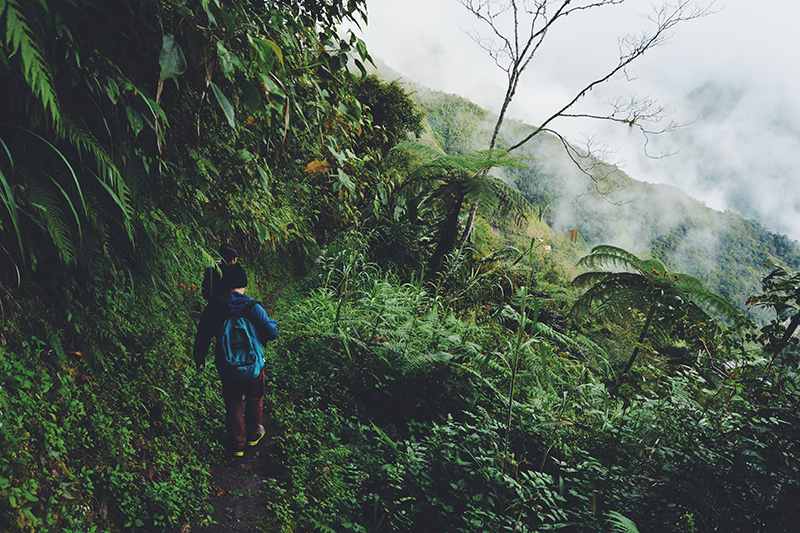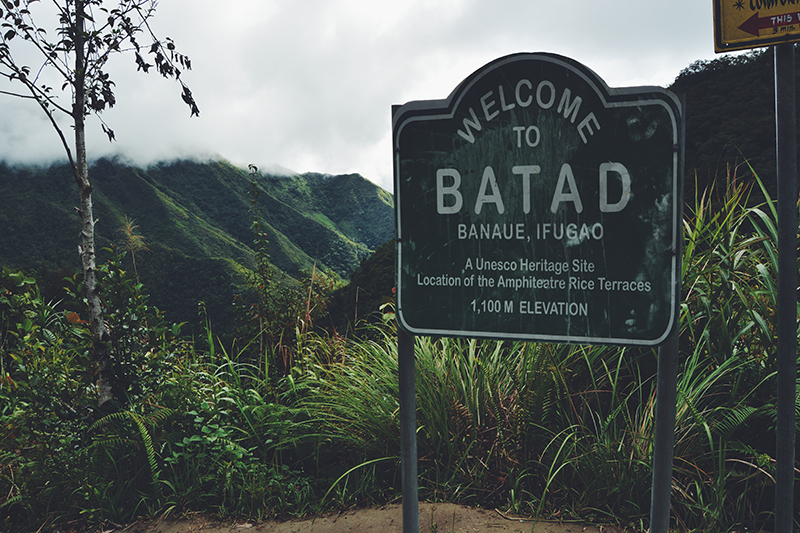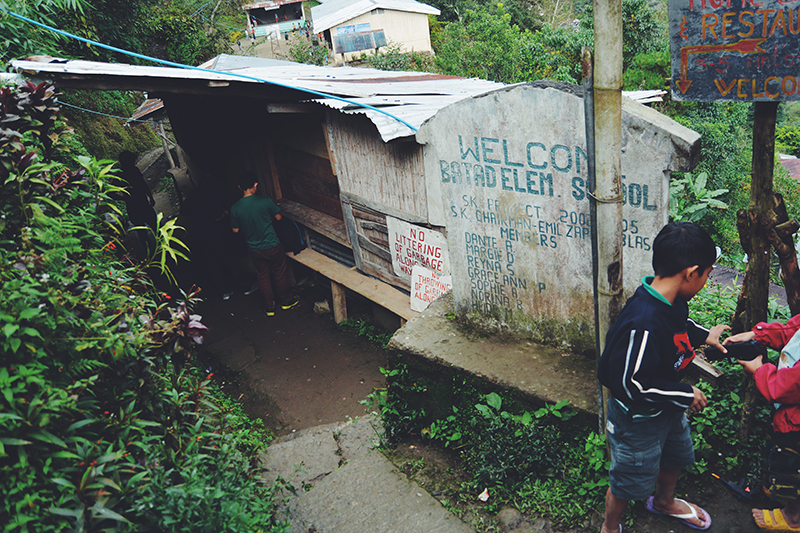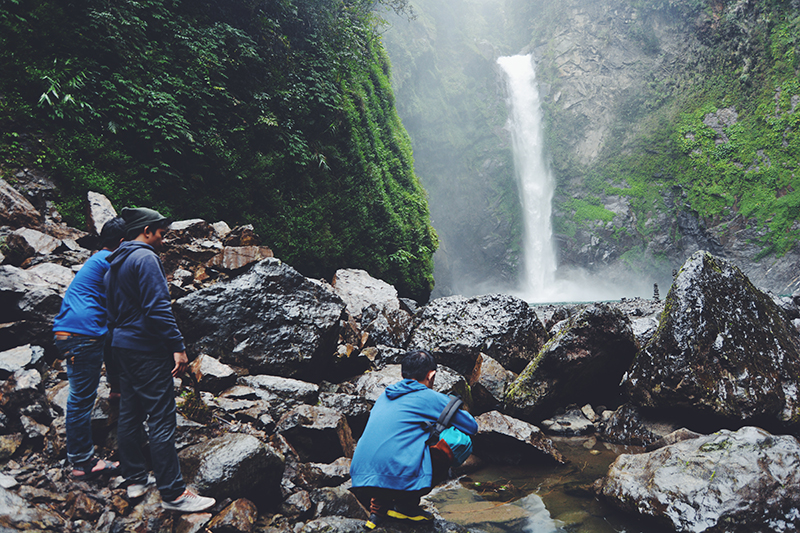
WE ARE ABOUT 20 minutes into our tricycle ride from the town center to the Batad Junction Point when I realize I can’t stand the cold. We have left Baguio City and crossed into Ifugao province in the dead of the night, but to everyone not of this territory – I, Joseph and Dave included – every provincial boundary disappears and this becomes only a place of cold. It’s a shivering cold and everything is somehow about the cold.
In the days before we find ourselves in Ifugao, I had found myself increasingly intrigued by the mountains of Cordillera in northern Luzon, reading as much as I can about these spiny ranges that command awe, respect and fear in equal doses among its inhabitants and visitors alike. It’s not a new occurrence for me, though. Ever since I’ve come to the realization that I’m about to leave my twenties, I’ve thought about finally doing something that I’ve always wanted to do but, for some reason, couldn’t do. My current payroll and savings can’t take me yet to India or South America or some other distant place, so when an idea to go to the famed rice terraces popped in my head, I thought it might just be the cure – never mind a temporary one – for my quarter-life crisis.
The problem has always been getting there. The rice terraces are primarily accessible only by a few buses that ply the Manila-Banaue or Baguio-Banaue route. In my current schedule, it takes a lot of planning and a few extra days off from work. And when those two somehow presented themselves, it’s just a matter of getting enough motivation to work out the details of the trip. Spend a day in Baguio, then at night board a bus to Banaue, which will take 8 hours. Take a short rest, then early in the morning, ride a tricycle to the Saddle Point, 13 kilometers away from the town center. From there, do a hike to the rice terraces, then another walk to the falls.
Unlike Baguio, though, Banaue feels very much a quaint place where the progress of urban development gives way to rural living. From a hotel terrace perched on a hillside, the sounds of the creek far below can be heard as thick shrouds of mists cover the view of houses from afar. The weather is a bit harsh, with drizzle exacerbating the cold air. And the wi-fi connection is spotty at best. It’s exactly what we need at this moment – complete isolation from the madness of our world.




THE TREK THIS morning is easy – at least compared to the trek I’ve had at Mount Pulag almost two years ago. There are a few steep slopes, but mostly the trail descends at a manageable rate. Before we know it, Joseph, Dave and I, along with our guide Denver, have reached the juncture where the main road from the Junction Point ends, and a rocky trail starts. We make our way through muddy and slippery paths until we come to a sign announcing our location – Batad.
A few minutes more and we finally see the rice terraces. It’s just as a guidebook has described – something like a stadium “where the bleachers are row after row of perfectly sculpted green terraces,” except now the terraces are mostly barren with the planting season just starting. Still, the sheer size of the rice fields and the organic quality of the place are truly mesmerizing.
The Batad Rice Terraces are one of the five rice terraces in the Cordilleras inscribed on the UNESCO World Heritage List. These terraced pond fields were built 2000 years ago by a community of Ifugaos without the use of machinery and were fortified only by a complex of stone and mud walls. Water from the forests of the mountains are harvested through intricate irrigation systems. Such method of farming is passed on from generation to generation, thus illustrating how cultural traditions can persist and endure the changing times.
Life in the village here is very basic, with just a makeshift tourism center, a few simple guesthouses and an elementary school to pass for “modern” infrastructure. There isn’t a supermarket or a hospital. Not that the village needs one. The sense of community among the residents is where a local can gather strength from. It is, after all, how these terraces were built.




A FEW MORE minutes and we make our way to the Tappiya Falls, which requires another 40-minute trek. We come to a path that heads to the left and cuts steeply upwards. I say a prayer and ask for endurance that I survive this trek. Time spent outdoors is all the more healing for those of us who have to deal regularly with the physical and spiritual pollution of the modern society. It’s always a relief to be at one with nature from time to time and focus on climbing your mountains – this particular moment, a literal one.
Soon the trail comes close to a raging stream and becomes so steep that it’s not long before Joseph, Dave and I continue motivating each other to keep ourselves walking. Just a few meters more, we tell ourselves. Walk 50 steps, then rest. The best thing about hiking with friends is there is no such thing as embarrassing.
After what seems like hours, but what the watch says only 40 minutes, we hear the water. Around the final bend, we finally see water cascading from a 30-meter-high cliff, its green waters rimmed with mossy boulders. We set off happily toward the water despite the bone-jarring coldness. We make our way towards the riverbank, our tired legs mustering every ounce of energy as we navigate through the slippery stones. It’s already past noon when we reach it, and we feel victorious despite the coldness biting our bodies. With plenty of time to make it back to Saddle Point, we take off our shirts and our shoes, and run towards the water.


Leave a reply to Boots Cancel reply